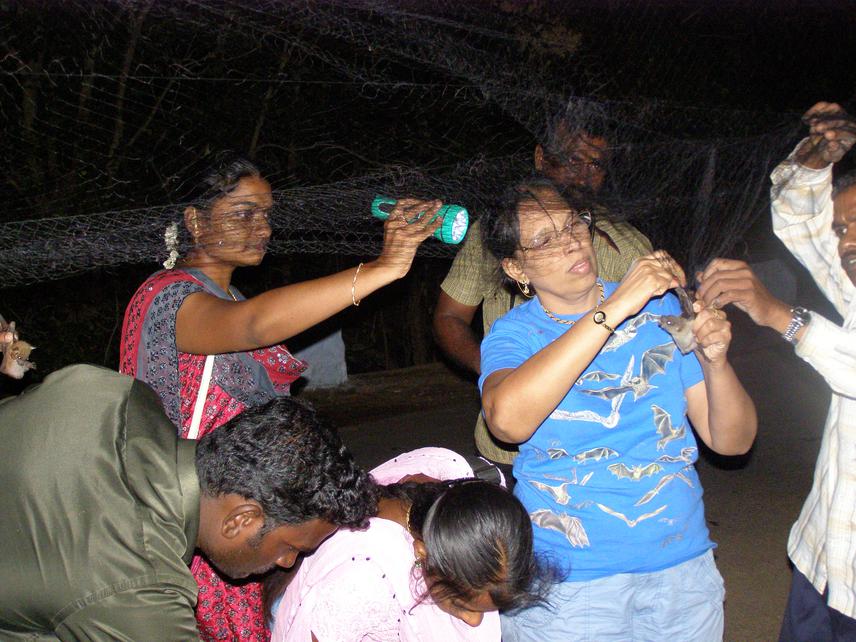Juliet Vanitharani
Other projects
14 Aug 2002
Conservation Status of Bats in the Agesthiyer Hill Range in the Western Ghats, India
8 Jan 2004
Conservation Status of Bats in the Agasthiyar Hill Range in the Western Ghats, India, with Particular Reference to Salim Ali's Fruit Bat I
16 Jun 2014
Conservation Status of Bats of Southern Western Ghats, India, With Particular Reference to Salim Ali’s Fruit Bat (Latidens salimali)
Ongoing Survey and Identification of caves, cavities, crevices, trees and anthropogenic structures exploited by bats as roosts.

Agasthiyar Hill Range of Southern Parts of Western Ghats bordering the hills of Kerala state in the west and the plains of Tirunelveli District in the east (between 08º 20' N, 77º 31' E and 09º 30' N, 77º 08' E) Map 1.It is domicile for multi-species and multi-aged trees as dominant community. These forests endow with imperative resources of both ecological and economical value. Being a hotspot they provide habitat for Wildlife, prevent drought, provide womb for river Thamirabarani and maintains purity of atmosphere. Recent human interference, indiscriminate felling of trees and misused estate management cause damage to this ecosystem. Restoration is the only step for the reconstruction of various tropical forest types.
The available bat diversity in this ecosystem is importance in restoration by controlling insect pests, dispersing seeds and pollinating flowers. The lack of knowledge about these key stone species availability and their distribution created the most imperative need for the study of bats in this part of the world. Without knowing these incredible partners conservation measures cannot be taken.